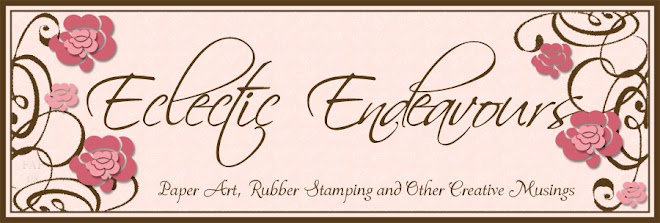I was asked for advice by a beginner card maker; I spent ages writing her a long, long email with advice for her. She was thrilled with it and suggested that I publish it for others who might also be starting out. We bloggers often assume that others understand not only our short forms for terms but basic card making techniques and supplies. So this is Part 1 of a beginner card making series.
Before you can buy patterned paper or stamps, you need to analyze what your style(s) is/are. There are too many stamps out there to just grab what is pretty to your eyes at first glance! The best way to waste money is by buying stamps that are gorgeous but you end up not using. Think about your style in other areas of life. What is your decorating style? Not necessarily what you have but what you wish you had! What about your clothing style? Bohemian? Sophisticated? Vintage? Retro? Cute? Tailored? Casual? Outdoorsy? Include not only what you wear on a regular basis but also what you would wear if your lifestyle allowed it or if it was popular. I love heirloom clothing but it would make me look like I was dressed as an extra in a movie! What type of art do you like? What type of jewellery do you go for? Where do you vacation? Beach? City? Country? Camping? Historical tours? That will often help you figure out what type of stamps you should buy. Not that you will only have one style or only buy one type of stamps. Because of that, you might also want to look what you don’t like! There are gorgeous stamps out there that appeal to me at first but when I really think about it, I just know I won’t use them. One nice thing about stamps is that you can buy ones that are in a style you like but aren’t brave enough to wear or decorate in!
Now, remember this is advice for beginners, striving to creating a collection of stamps you will use most. Experienced (or wealthy!) stampers will always have some images they LOVED and HAD to have but they don’t use much. But when you are starting, every stamp has to be one that will get some serious use because you don’t have many to choose from.
When you look at a stamp, ask yourself the following questions: What type of cards would I make using this stamp? When I use this stamp, who am I creating for? Can I use this for a variety or 
What techniques or colouring mediums do you like best? If you like to solid stamp or make your own specialty backgrounds, get 
One other consideration in buying stamps is the type. There are 


Pros and cons? Unmounted of either type is WAY cheaper than wood mounted, about 50-75% of the price of wood mounted. Rubber will last longer than clear (several lifetimes if cared for) and although they have improved the clear technology lately, no one really knows how long they will last. If you get unmounted rubber provided with wooden blocks, you can choose they way 

photo above because as a right-handed person, I can see the edges of the rubber helping me get the image in the right place. Wood mounted takes about 4-8 times more room to store but is convenient because you don’t have to place them on acrylic blocks. Clear stamps are easy to lose because they are hard to see once dropped but take little room to store. Shipping is usually cheaper for clear or unmounted rubber stamps. Some companies 

Paper is a bit easier to choose, not only because it is cheaper and therefore less of an investment, but also because you don’t have it forever like stamps. Still, try to think of how you will use it. I recommend that you buy cardstock and paper that coordinate to start (and ink but I will cover that in Part 2) because it wastes time and 
This got way too long, sorry. I hope this helps some newbies. Enjoy, Rebecca


















































